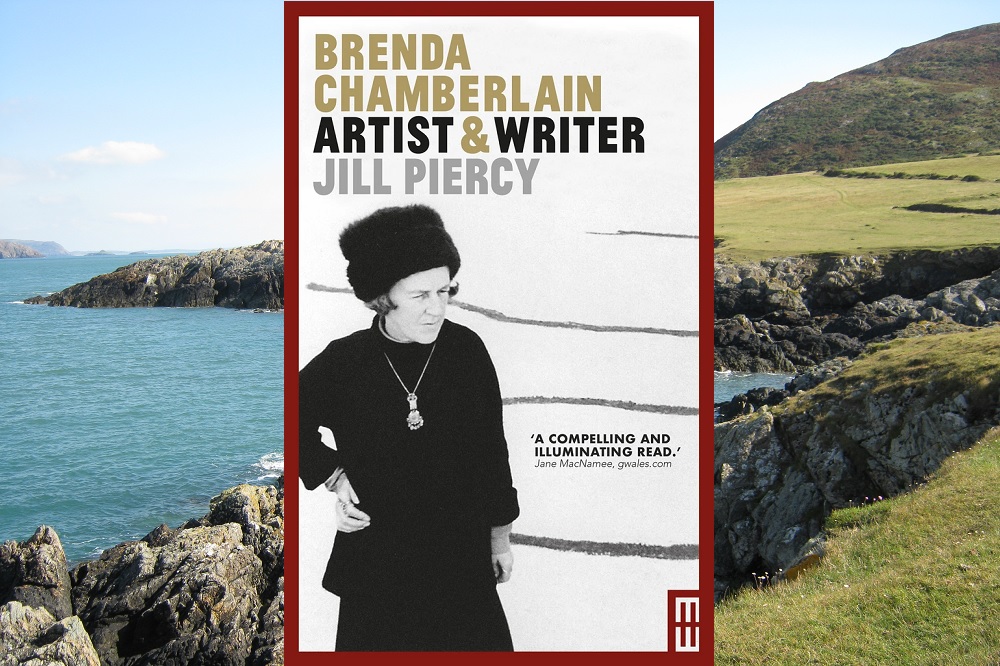Review: Brenda Chamberlain – Artist & Writer is a portrait of a gifted, sometimes tortured woman

Jon Gower
Places exerted a powerful influence on Brenda Chamberlain and in particular two very different islands, Bardsey, Ynys Enlli where she lived for fifteen years and Hydra in Greece where she stayed for five. They offered stimulus and sometimes solitude although she was at heart busily gregarious, constantly wanting to be at the heart of things.
Chamberlain knew she wanted to paint and write by the age of six. She did not shine during her education, passing only two subjects, English and Art in the School Leaving Certificates. But her contributions to the school magazine displayed an interest in modern art and a penchant for poetry. In her spare time she joined her schoolgirl friends in walks deep into Snowdonia and when she wasn’t out in the field she was taking a serious interest in drawing and writing.
After leaving school she spent half a year in Copenhagen, where the museums engaged her and she discovered Gauguin who was to exert a powerful influence on her. The portfolio of work generated during her time in Denmark was enough to set her up for a successful application to the Royal Academy Schools to study art, even though her father took a dim view of such a decision. Ensconsed in South Kensington she took to a regime of drawing all day and all night, alongside fellow students such as Mervyn Peake and Peter Scott. But one stood out, namely John Petts, whose connections with Wales included friendships with the likes of Alfed Janes and Dylan Thomas.
Petts and Chamberlain fell in love and were soon living in a tiny cottage called Hafod-y-Glyn in Snowdonia. It was a tough place to live. Here she would sometime see mountain ponies, even in beak midwinter: ‘They are thin and hungry, but they will not eat hay that we leave outside for them. They are tenacious of life, lying sleep on the snow on days when men are glad to hurry home to the comfort of hot stew and a wood fire.’
Deciding on which medium to employ was always a dilemma for her so she often mixed the two, illustrating her books to great effect, and yet ‘Emotionally, I was always tempted to drop the writing and concentrate on the painting, because, for some unknown reason, writing has always been for me an unhappy activity.’
Turbulence
In Jill Piercy, Chamberlain has found a sensitive and respectful biographer whose principal strength is the enlightening discussion of the visual art, especially such complex and challenging series of works such as the ’10 Black Brides.’ Each features the Bride in an identical stance, with an accompanying wedding veil, which can sometimes resemble a fishing net and in other iterations a melancholic item of dress which most resembles a shroud. When it comes to the writing Piercy lets it speak for itself, citing apposite passages and always setting it in a useful context. Here’s Chamberlain’s vivid description of the king of Bardsey, based on a real-life island character called Love Pritchard:
“He had a light metal crown chased with a design of seahorses and shells, worn slightly side-ways on his head, and in his crablike fingers he held a plug of twist from which he was cutting thin wafers of tobacco. By his side lay an empty rum bottle. He was gross with majesty, and must have been a good trencherman and an heroic drinker. He reeked of fish and salt and tarry ropes.”
Bardsey was a very important place and time in her life, and from her very first encounter she knew it was the ‘only place for me to live’ and she did so through huge storms and inner turbulence. At one point one of her neighbours, a man called Berthold lost his battle with the Devil and a surge of religious fanaticism ended up with his being placed in a straitjacket and taken by boat to a mainland asylum. Brenda Chamberlain’s book about Enlli, ‘Tide-race,’ took such characters and fictionalized them, then won critical plaudits and an appreciative readership.
The islanders were much less enchanted, and their rejection of her portrayal of the island community led to her being served an eviction notice by her landlord. Periods in Germany followed, where she visited a young man she’d been enamoured of decades previously, before she visited Hydra and found herself a new island home and made new friends. Here she befriended a man who was accused of manslaughter and a virile dancer called Robertos and developed a drawing system to try to capture his movements on stage and in rehearsal.
She was in Greece during dark times, when a military coup ushered in the rule of the Colonels, with attendant atrocities and severe, draconian rule. This probably seeded her later depression which saw Chamberlain admitted to the Denbigh Mental hospital and subsequent art work in which the subject was a woman trapped or restrained. Money worries beset her too and a spiral path of misery eventually resulted in a barbiturate overdose which played a significant part in her death.
This portrait of a gifted, sometimes tortured woman will hopefully encourage people to seek out books such as ‘Tide-race’ and ‘A Rope of Vines’ which are both reasonably accessible. But seek out too her paintings and engravings, as here was a true artist, complex and compelling, a writer who paints with words just as her paintings and colourful linocuts sing of a woman ferociously and tenaciously engaged with the world.
Support our Nation today
For the price of a cup of coffee a month you can help us create an independent, not-for-profit, national news service for the people of Wales, by the people of Wales.





